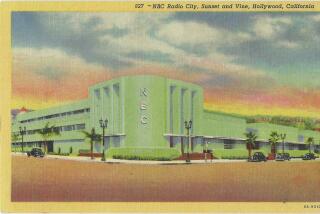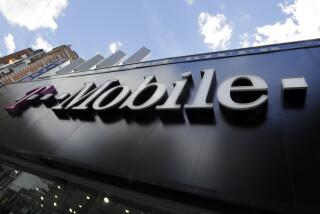Call Cards: Dial M for Misunderstandings
First, a California man says, AT&T; sent him, unbidden, a new Calling Card with a number totally unlike his old one, which was based on his home phone number. That old number would soon be “invalid,” said the AT&T; service rep who took his call for explanation. Besides, the new card provided a lot of new advantages, said AT&T;’s accompanying brochures, which urged recipients to “Say Hello to the Future.”
Trouble was, he couldn’t figure out what was wrong with the past, and it griped him. When he called Pacific Bell, the local company whose card he actually used most of the time, he was told that the old number based on his home phone was still good everywhere and for everything. In fact, says PacBell’s new marketing slogan, the PacBell card is “the only card you need.”
The only thing really clear is that we’re in the middle of yet another telephone war, a battle of calling cards, and one that now includes open skirmishes between AT&T; and its former Bell relatives. More clearly yet, it illustrates the new competitive environment, in which deregulation is defined as a good thing, a free market is touted as better, and this is a mess.
So which card is really needed? As I understand it, both. Or either, as I understand it. I have to keep saying “as I understand it” because even after half a dozen official explanations, I really don’t. It’s beyond the understanding of ordinary mortals, like so many aspects of the new telephone system.
Each new development “piles confusion on top of confusion,” says Ken McEldowney, director of Consumer Action in San Francisco. “Every time I begin to think finally things are about to shake out, there comes another wrinkle.”
The whole thing has its roots (what doesn’t?) in the 1984 breakup of AT&T; and deregulation of the industry. Suddenly there was competition, and it seemed an unfair advantage that AT&T;’s charge cards bore exactly the same number as those of Pacific Bell or the customer’s particular local company, and that they shared databases. So AT&T; was given a reasonable amount of time--seven years seemed reasonable--to convert to new numbers.
The AT&T; conversion will leave local companies such as Pacific Bell with the old familiar “home-based” number--an asset in many ways--and AT&T; with a new marketing problem. Whereas before, neither much cared, now both want the consumer to use their particular card.
AT&T; wants to keep the long-distance revenue. Pacific Bell wants the “validation fee,” which (as I understand it) is money earned by the company whose card is used: That company is automatically authorizing the call to go through, after the consumer keys in a charge number recognized, or validated, by its computers. The industry calls this the charge for “bong tone,” because the number the consumer offers after he dials zero and hears a “bong” determines the authorizing company. (Is it possible for anyone to understand an industry selling us products like bongs and dial tones?)
Alas, choosing a long-distance charge card is even harder than choosing a long-distance carrier. The extra complication is the phone.
Try to concentrate now. Apparently there are differences not only among phone companies (entities selling bongs and dial tones) but among phones, which are owned by people on whose premises they sit. Every home, hotel, restaurant, airport and lonely roadside booth is “presubscribed” to a particular long-distance carrier--some large and familiar, some (particularly at lonely roadsides) small, unknown and nervy enough to charge $5 a minute.
The consumer who pays in coins, or bills a hotel room, or uses his local company’s card (in essence, charging the call to his home phone) gets the particular phone’s presubscribed carrier, whatever its charges. The consumer who wants to use his own chosen long-distance carrier may be able to dial a special number to do so, but then again, he may be blocked from doing so--at least until new federal regulations forbidding blocking take effect in early 1992.
That, as I understand it, is the main difference between the card of a long-distance carrier such as AT&T; and that of a local operating company such as Pacific Bell--even though once they were virtually one. One may get lower rates and discounts with a chosen long-distance carrier (assuming one can figure out how). But one can always get through with a local company card.
What no one gets is full explanations from the various card-issuers. For one thing, they’re in competition now, and more forthcoming with marketing matter than information. PacBell, for example, stresses the access advantages of its home-based number, referring consumers to long-distance companies for any real information about long-distance routing and rates. AT&T; implies that its old home-based number will cease to exist or work when AT&T; loses it, and only reluctantly concedes that at least for a while, certain phones won’t accept its new numbers.
For another thing, their people don’t understand it all any better than you or I. Until someone does, you might as well get both cards, call your pastor, or wait for a revelation.
More to Read
Inside the business of entertainment
The Wide Shot brings you news, analysis and insights on everything from streaming wars to production — and what it all means for the future.
You may occasionally receive promotional content from the Los Angeles Times.










